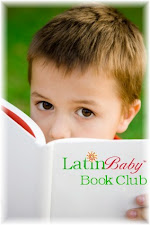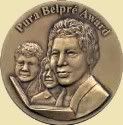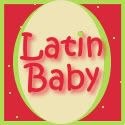 My mother read to my brother and me every day when we were little, but I don’t remember her reading to us much in Spanish. We lived in the U.S. back then, and children’s books in Spanish were probably hard to come by. Whatever the reason, she read to us mainly in English.
My mother read to my brother and me every day when we were little, but I don’t remember her reading to us much in Spanish. We lived in the U.S. back then, and children’s books in Spanish were probably hard to come by. Whatever the reason, she read to us mainly in English.This I do remember: When she did read to us in Spanish, she read poetry. I don’t remember more than a handful of the poems themselves, but I can still hear the rhyming verse, the soothing lilt of my mother’s voice, and vividly recall the cozy bedroom where we read at night. Many years later, when I was in high school, my mother gave those books away. She donated them to the local school in our town in Costa Rica, a tiny, rural school that was desperately in need of books. I was crushed. It felt like a cherished part of my childhood had been lost.
It’s strange, then, that I didn’t rediscover children’s poetry until my twins were two. When I happened upon that first book of poetry, I soon began calling it my “magical book.” Whenever I pulled it out, tantrums miraculously stopped, crying fits were quelled, replaced with giggles and cries of, “¡Otra vez! Otra vez!” (I felt a special kind of mother’s guilt as I left my children’s bedroom one night while one of them cried repeatedly, fat tears rolling down his cheeks and book of poetry in hand, “¡Quiero más poesías!”—even though it was way past his bedtime and I suspected I was being manipulated.)
Though other books have been outgrown or fallen out of favor, our books of poetry are here to stay. We now own no fewer than twenty of them (because once you start, you can’t stop). But even though they’re all fun books, only a few of them qualify as magical.
One of them is Poemas con sol y son, a book I love for many reasons. I’m partial to anthologies, and this one includes poems by various authors from thirteen countries. The book is divided into sections, one section per country, and the name of the country is printed on each page.
In this book you will find poems by Rubén Darío and Gabriela Mistral—but only a couple of them. (I’d only heard of a few of the authors before, so I liked the short bios at the end of the book.) There’s a little of everything, and it makes for a great mix. Some of the poems are wistful, like the one about the little boy following the moon, or the one about the abuela who tells her grandchild stories of her childhood and then begins to weep. Some are fun, or just plain silly—there’s a message for Jonah (from the whale, of course), a poem that explains why penguins wear coats and tails instead of blue jeans, and a sweet conversation between a ladybug and a snail in the spring. Some of the poems you can practically dance to.
My boys were two when we discovered this book, but it would be appropriate for children many years older as well. This book will grow with them--the vocabulary is deliciously rich and some of it is obviously over my preschoolers’ heads (and often over my head as well). I love that they will be exposed to such beautiful language, language that I can’t just come up with on my own. I read to my children in Spanish because I realize it’s such a valuable teaching tool, and because I want learning Spanish to be fun, not a chore. This book makes it easy. I’ll admit that my favorite poems are the ones that take words and play with them, shape them until they’re sometimes barely recognizable but the meaning is still clear. Take this excerpt from Palabrota, by Argentinean author Silvia Schujer:
Una palabra
palabritera
despalabrábase
por la escalera.
¡Pobre palabra!
se apalabró
palabrincando
cada escalón.
Or this excerpt from La bicicleta, by Eugenio Montejo of Venezuela:
La bici sigue la cleta
por una ave siempre nida
y una trom suena su peta…
¡Qué canción tan perseguida!
Some of the poems provide food for thought—did you ever stop to think that maybe the H is silent because she was tired and fell asleep? And then there’s my favorite poem, which is also the shortest one in the book, by Colombian poet Jairo Aníbal Niño. The title asks, ¿Qué es el gato? and the answer reads, simply:
El gato
es una gota
de tigre.
My only regret is that I didn’t buy the hardcover edition, because we’ve been so hard on our paperback that it’s held together with tape. Still, I’ll never get rid of it. My kids may want it someday.


















0 comments:
Post a Comment